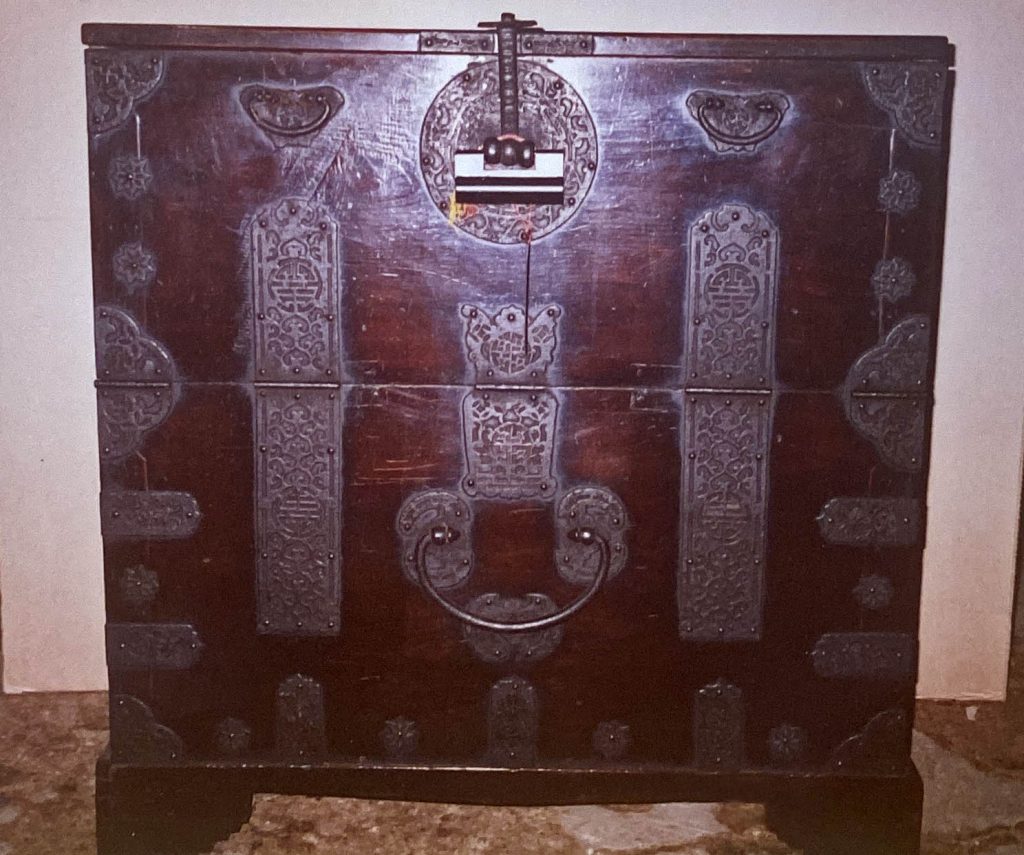
Ca. 1870, chestnut wood with iron fittings, Pyongyang City.
24¼” h. 30” w. 15¼” d.
Made in what is now North Korea, this chest came out with a family migrating from north to south as a result of the Korean War. With its heavily hand-wrought and unusually thick ironwork, it is a fine example of what North Korean furniture artisans could do in by-gone days.
This chest is built from expensive chestnut wood. The thick ironwork has openwork wrought with typical North Korean designs. Various auspicious motifs were used. The lock, in the shape of an elephant trunk, is mounted on a round, heavily hand-wrought openwork lock-plate with a pattern including interlocking curves and circular lines which have Taoism-inspired significance. The butterfly-motif pull-plates with the swastika design in the middle signify perfection, harmony, and long life. This butterfly motif, with a stylized Chinese ‘long life” symbol in the middle, is shown on the top part of a middle hinge to a drop-leaf door. On either side of this hinge is an elongated vertical openwork metal hinge in a design very typical of hinges on North Korean chests. The big half-round iron-pull attached to bat-design plates towards the bottom of the chest signifies good fortune and happiness. These heavily hand-wrought symbolic designs are scattered throughout the front of the chest.
It is very rare to find an authentic North Korean antque chest in the marketplace today. It is certified by a Professor of Korean History and Antiquity, one of only thirteen approved by the government in the 1900s.